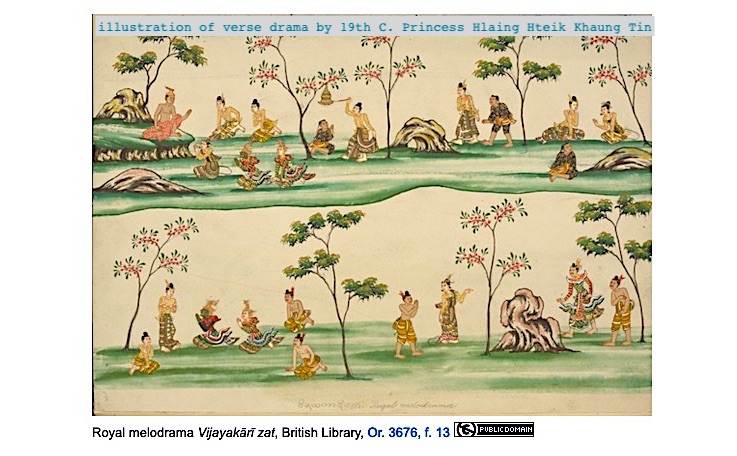
Author, activist, artist, adventurer. "Where the Mithuns Are" is my latest book. Founded Project Maje, 1986 (Burma human rights/enviro info) https://t.co/dyh2WUpajK
How to get URL link on X (Twitter) App





 2. Karen ethnic people speak Tibeto-Burman languages. Their lands include highlands along Burma’s Thailand border & flat Irrawaddy Delta region. [This thread isn't about Karenni ethnic people, who are related to Karens but have their own homeland to the north.] Map: overview only
2. Karen ethnic people speak Tibeto-Burman languages. Their lands include highlands along Burma’s Thailand border & flat Irrawaddy Delta region. [This thread isn't about Karenni ethnic people, who are related to Karens but have their own homeland to the north.] Map: overview only 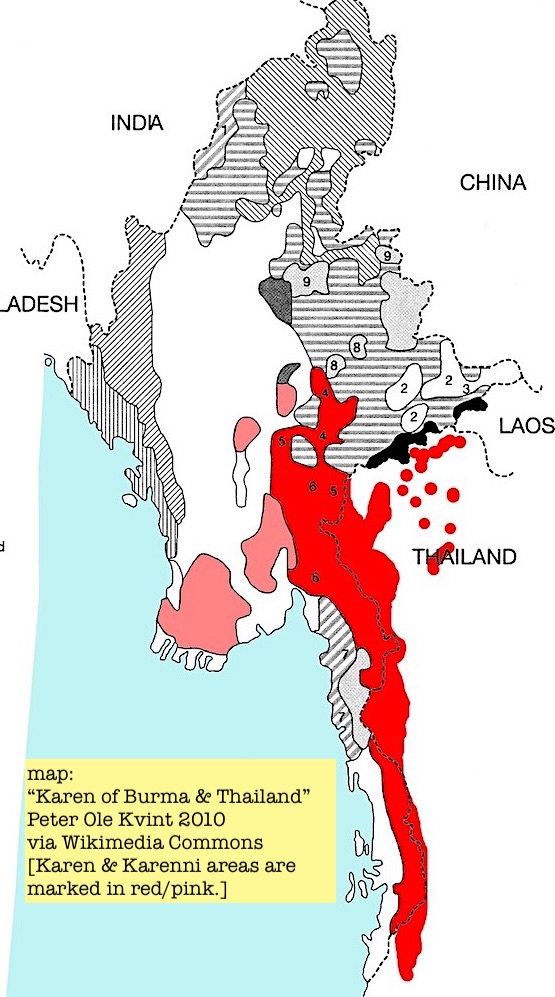





 2. Dagon, a Mon village with sea trade, existed in 11th C. where Yangon (Rangoon) is today. Royalty & pilgrims visited Shwedagon Pagoda there, mentioned in records from 14th C. In 1586 British Ralph Fitch called it “the fairest place, I suppose, that is in the world.”
2. Dagon, a Mon village with sea trade, existed in 11th C. where Yangon (Rangoon) is today. Royalty & pilgrims visited Shwedagon Pagoda there, mentioned in records from 14th C. In 1586 British Ralph Fitch called it “the fairest place, I suppose, that is in the world.” 





 2. Migrations along river plains brought early settlers to an area which would much later become Mandalay. Archeological evidence indicates iron-working villages & trade circa 500 BCE. Pyu & then Burmese (Burman, Bamar) people lived there.
2. Migrations along river plains brought early settlers to an area which would much later become Mandalay. Archeological evidence indicates iron-working villages & trade circa 500 BCE. Pyu & then Burmese (Burman, Bamar) people lived there. 

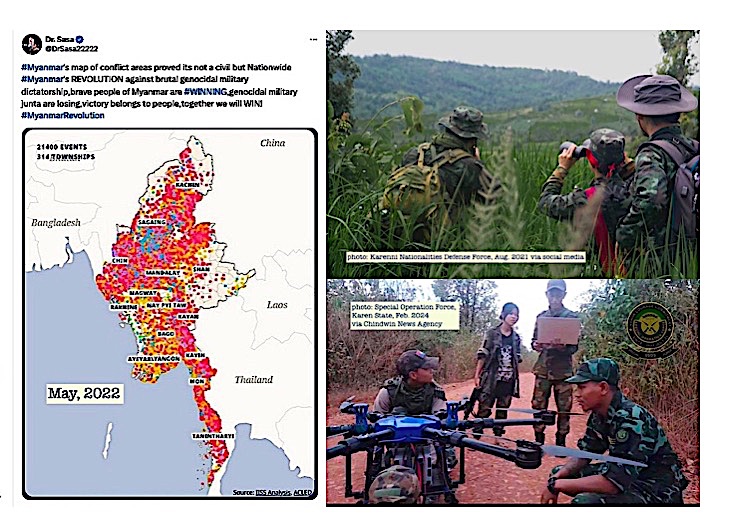
 2. People all over Myanmar immediately resisted Feb. 1, 2021 coup with street protests & Civil Disobedience Movement (CDM) strikes + boycotts. As coup regime reacted violently, many in resistance turned to armed struggle. Important: CDM also continues. cnn.com/2021/05/04/asi…
2. People all over Myanmar immediately resisted Feb. 1, 2021 coup with street protests & Civil Disobedience Movement (CDM) strikes + boycotts. As coup regime reacted violently, many in resistance turned to armed struggle. Important: CDM also continues. cnn.com/2021/05/04/asi…




 2. Region that became Shan States of Burma, now Shan State of Myanmar has fertile plateau, rivers, hills. Bordering China, Laos & Thailand. Shan (Tai) are ethnic majority in State, smaller populations incl. Pa-O, Ta’ang, Wa, Akha, Lahu, Danu, Gurkha, Yunnan-related Chinese.
2. Region that became Shan States of Burma, now Shan State of Myanmar has fertile plateau, rivers, hills. Bordering China, Laos & Thailand. Shan (Tai) are ethnic majority in State, smaller populations incl. Pa-O, Ta’ang, Wa, Akha, Lahu, Danu, Gurkha, Yunnan-related Chinese. 
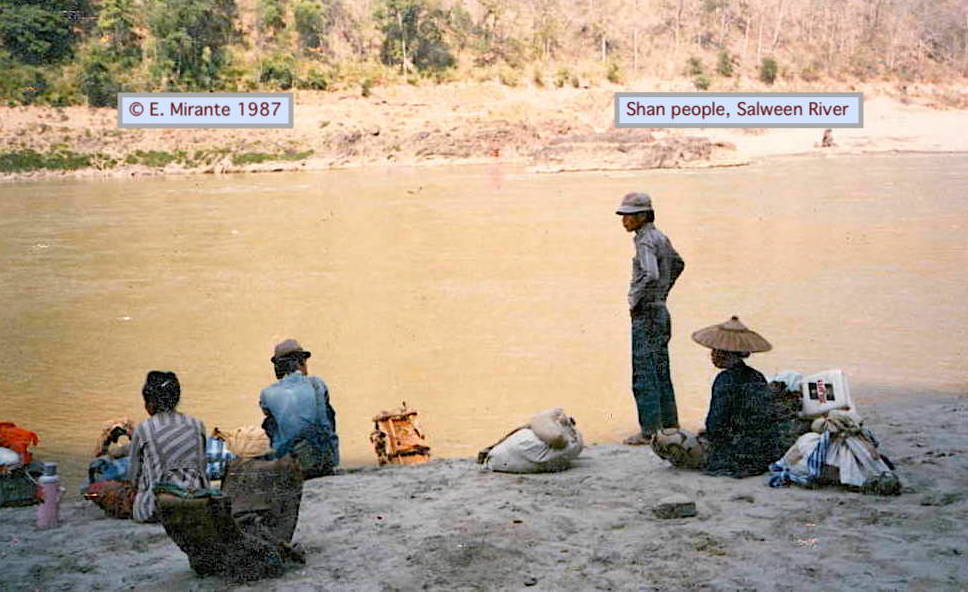




 Note: Due to recent display change on this platform, headlines are now missing for linked articles, so please click on the linked images to view linked articles for posts 4, 6, 9-14. 🐦⬛
Note: Due to recent display change on this platform, headlines are now missing for linked articles, so please click on the linked images to view linked articles for posts 4, 6, 9-14. 🐦⬛




 Note: Due to recent display change on this platform, headlines are now missing for linked articles/videos, so please click on the linked images to view linked articles/videos for posts 8-16. 🐦⬛
Note: Due to recent display change on this platform, headlines are now missing for linked articles/videos, so please click on the linked images to view linked articles/videos for posts 8-16. 🐦⬛



 2. Ancient & early modern Asia had women warriors & military leaders. Queen Chamadevi was Mon military leader of Hariphunchai (n. Thailand.) Women in lands that wd become Burma were politically powerful/influential. Legendary Queen Panhtwar of Pyu still inspires anti-coup women.
2. Ancient & early modern Asia had women warriors & military leaders. Queen Chamadevi was Mon military leader of Hariphunchai (n. Thailand.) Women in lands that wd become Burma were politically powerful/influential. Legendary Queen Panhtwar of Pyu still inspires anti-coup women. 





 2. Arakan, now Rakhine State of Myanmar (Burma) was inhabited by Mro & Chakma people, later Rakhines & Rohingyas. Coastal & valley trading cities rose in Arakan from 3rd-4th C. By 14th C. Arakan a “vassal state” of Bengal Sultanate which spread out from Ganges–Brahmaputra Delta.
2. Arakan, now Rakhine State of Myanmar (Burma) was inhabited by Mro & Chakma people, later Rakhines & Rohingyas. Coastal & valley trading cities rose in Arakan from 3rd-4th C. By 14th C. Arakan a “vassal state” of Bengal Sultanate which spread out from Ganges–Brahmaputra Delta. 




 2. Ancient Indian Ocean trade routes connected Southeast Asia and East Africa. Seafaring lands like Arakan, Pegu, Tavoy in what would become Burma could exchange goods with great African ports like Kilwa Kisiwani & Songo Mnara.
2. Ancient Indian Ocean trade routes connected Southeast Asia and East Africa. Seafaring lands like Arakan, Pegu, Tavoy in what would become Burma could exchange goods with great African ports like Kilwa Kisiwani & Songo Mnara. 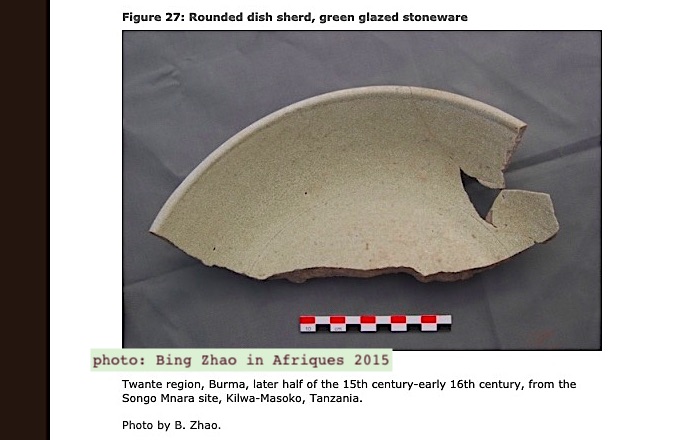




 2. Irrawaddy Valley State Railway Co.’s meter-gauge Rangoon-Prome line completed 1877 during British colonial control of Lower Burma. Railway reached Mandalay 1889 & lines added to Shwebo 1891, Katha 1895, Myitkyina 1898. 3 private companies taken over by Burma Railway Co., 1896.
2. Irrawaddy Valley State Railway Co.’s meter-gauge Rangoon-Prome line completed 1877 during British colonial control of Lower Burma. Railway reached Mandalay 1889 & lines added to Shwebo 1891, Katha 1895, Myitkyina 1898. 3 private companies taken over by Burma Railway Co., 1896. 


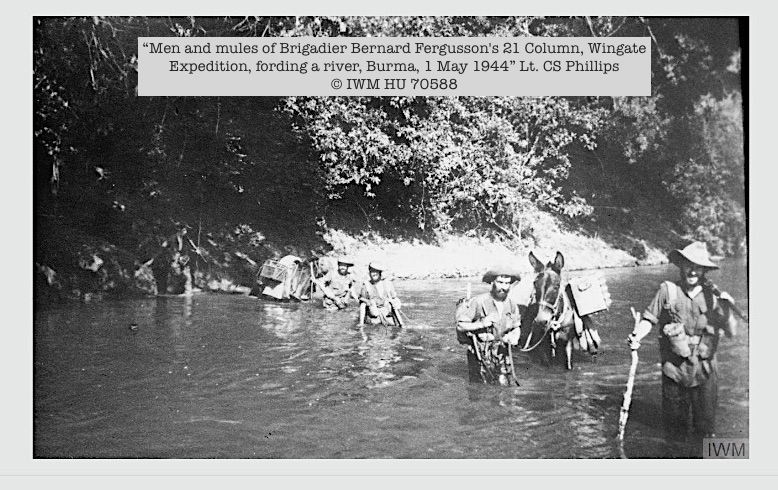

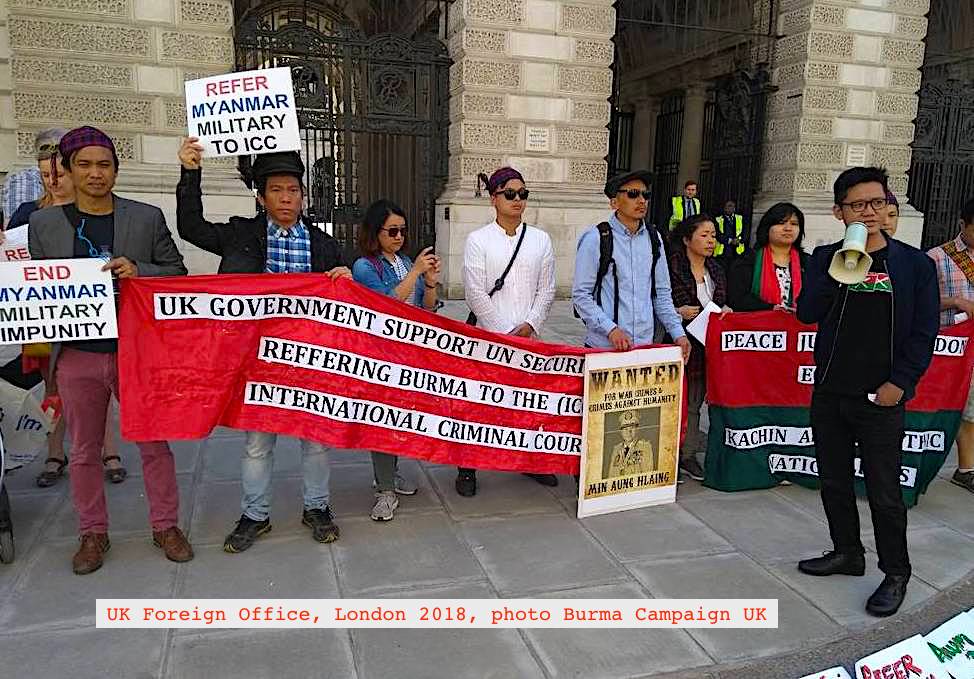 2. Lands that would become Burma were of interest to British East India Company due to rivalry w. Portuguese, Dutch, French. Ralph Fitch visited 1587 for BEIC. 17th-18th C. British trade, teak shipbuilding, diplomatic relations w. Ava. Conflict on Arakan border w. British Bengal.
2. Lands that would become Burma were of interest to British East India Company due to rivalry w. Portuguese, Dutch, French. Ralph Fitch visited 1587 for BEIC. 17th-18th C. British trade, teak shipbuilding, diplomatic relations w. Ava. Conflict on Arakan border w. British Bengal. 
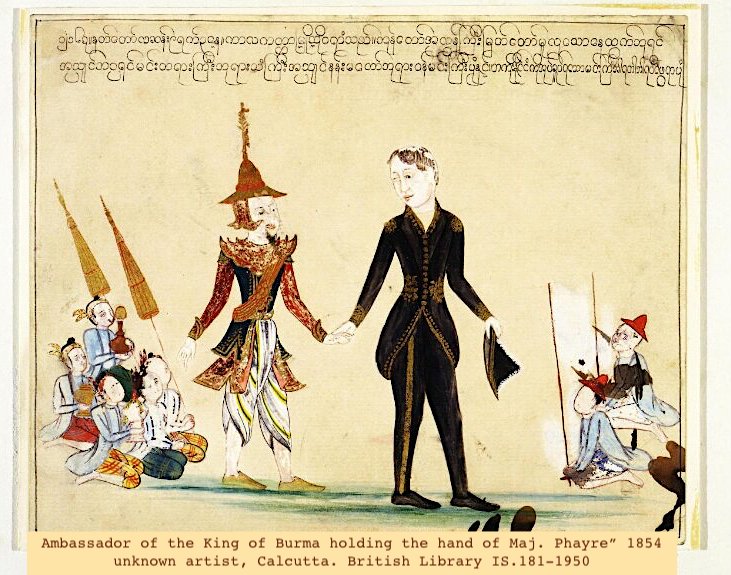





 2. In 2010s enabled by Myanmar crony Tay Za, Russia outpaced China’s arms sales to Myanmar. Russian sold Myanmar military MiG-29 jets, helicopters, Yak-130 training/attack jets, air defense missile systems, Su-30 fighter/attack aircraft, drones. irrawaddy.com/news/burma/bur…
2. In 2010s enabled by Myanmar crony Tay Za, Russia outpaced China’s arms sales to Myanmar. Russian sold Myanmar military MiG-29 jets, helicopters, Yak-130 training/attack jets, air defense missile systems, Su-30 fighter/attack aircraft, drones. irrawaddy.com/news/burma/bur…


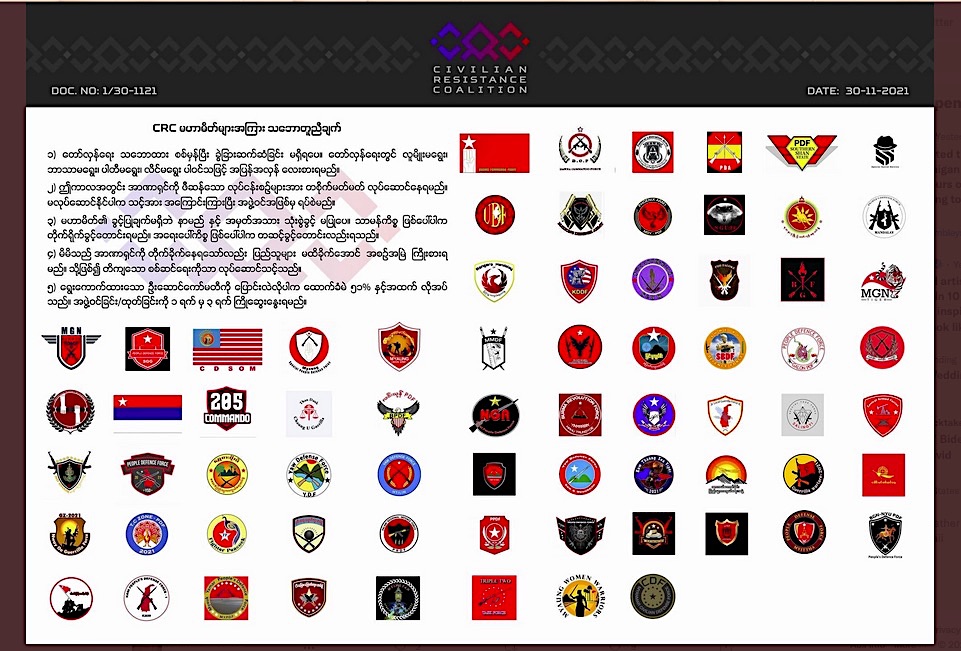
 2. In Sagaing Region, Sayar San PDF-4 of YMB (Yin Mar Bin Township) PDFs has a farmer’s hat with crossed swords as symbol & Depayin PDF uses Saya San picture. Saya San was charismatic leader of 1930-32 peasant revolt with sabotage campaign against British colonial rule of Burma.
2. In Sagaing Region, Sayar San PDF-4 of YMB (Yin Mar Bin Township) PDFs has a farmer’s hat with crossed swords as symbol & Depayin PDF uses Saya San picture. Saya San was charismatic leader of 1930-32 peasant revolt with sabotage campaign against British colonial rule of Burma. 




 2. Thailand most significant of ASEAN members for relations w. Myanmar (Burma.) Constant Burmese-Siamese Wars 16th-19th C. Burma rulers repeatedly invaded Ayutthaya (Siam) & were invaded in turn. 19th C. British colonized Burma but Siam (wd. become Thailand) remained independent.
2. Thailand most significant of ASEAN members for relations w. Myanmar (Burma.) Constant Burmese-Siamese Wars 16th-19th C. Burma rulers repeatedly invaded Ayutthaya (Siam) & were invaded in turn. 19th C. British colonized Burma but Siam (wd. become Thailand) remained independent. 




 2. Over millennia ancient migration routes along rivers connected lands that would become China with lands that would eventually be called Burma. Some peoples spoke languages of Sino-Thai family, others Tibeto-Burman languages; joined other ethnic groups inhabiting plains, hills.
2. Over millennia ancient migration routes along rivers connected lands that would become China with lands that would eventually be called Burma. Some peoples spoke languages of Sino-Thai family, others Tibeto-Burman languages; joined other ethnic groups inhabiting plains, hills. 



 2. Among earliest descriptions of lands that would become Burma by travelers from far away: 15th C. Russian merchant Athanasius Nikitin told his readers about Pegu, “a not inconsiderable port” inhabited by “Indian dervishes” (Muslim mystics) who traded in rubies & other gems.
2. Among earliest descriptions of lands that would become Burma by travelers from far away: 15th C. Russian merchant Athanasius Nikitin told his readers about Pegu, “a not inconsiderable port” inhabited by “Indian dervishes” (Muslim mystics) who traded in rubies & other gems. 

 2. In the independent (often warring) lands that would become Burma, music was created by different cultures, absorbed, captured, traveling. Royal courts sponsored musicians. Resistance to tyrannical rulers was sometimes expressed in subversive, satirical folksongs & chants.
2. In the independent (often warring) lands that would become Burma, music was created by different cultures, absorbed, captured, traveling. Royal courts sponsored musicians. Resistance to tyrannical rulers was sometimes expressed in subversive, satirical folksongs & chants. 

 2. From 1880s through 1930s there were rebellions against British colonial rule in Burma. Saya San rebellion 1930-32 challenged British control w. tactics including destroying cutting telegraph lines & destroying telegraph stations, timber industry facilities & railway bridges.
2. From 1880s through 1930s there were rebellions against British colonial rule in Burma. Saya San rebellion 1930-32 challenged British control w. tactics including destroying cutting telegraph lines & destroying telegraph stations, timber industry facilities & railway bridges. 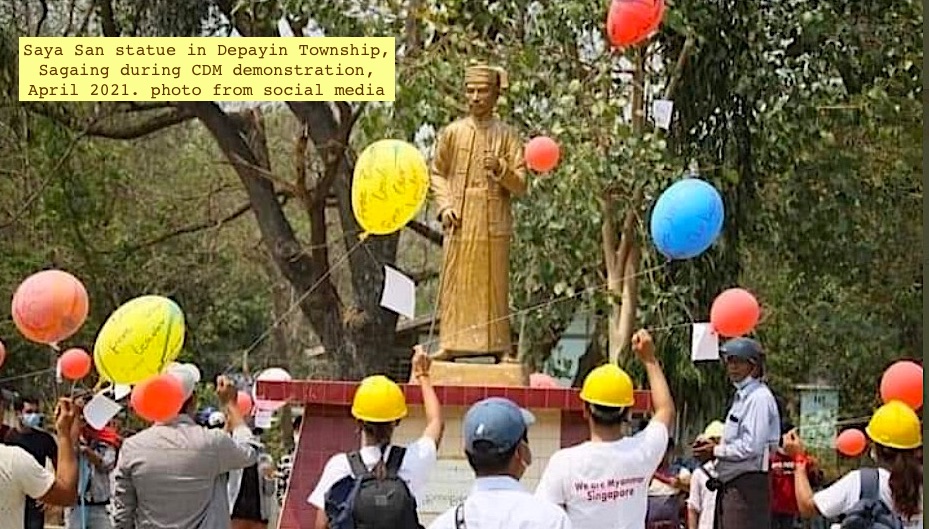
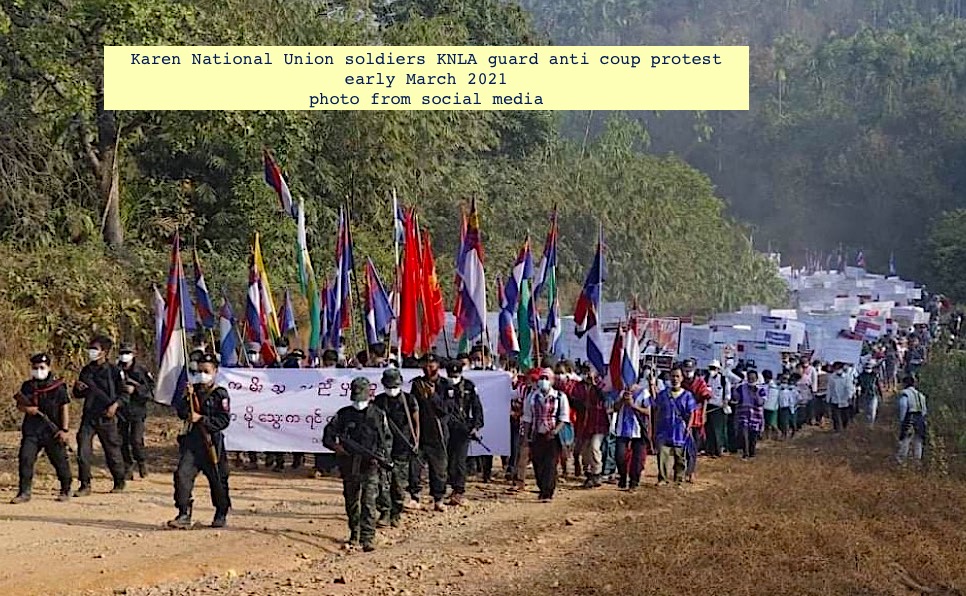
 2. EAOs did little to support previous civil uprisings vs Burma/Myanmar military. Failure to join in 1988 uprising other than sanctuary for fleeing students. Failure to support 2007 “Saffron Revolution.” Few EAOs spoke out against 2016-17 govt/mil genocidal attacks on Rohingyas.
2. EAOs did little to support previous civil uprisings vs Burma/Myanmar military. Failure to join in 1988 uprising other than sanctuary for fleeing students. Failure to support 2007 “Saffron Revolution.” Few EAOs spoke out against 2016-17 govt/mil genocidal attacks on Rohingyas. 
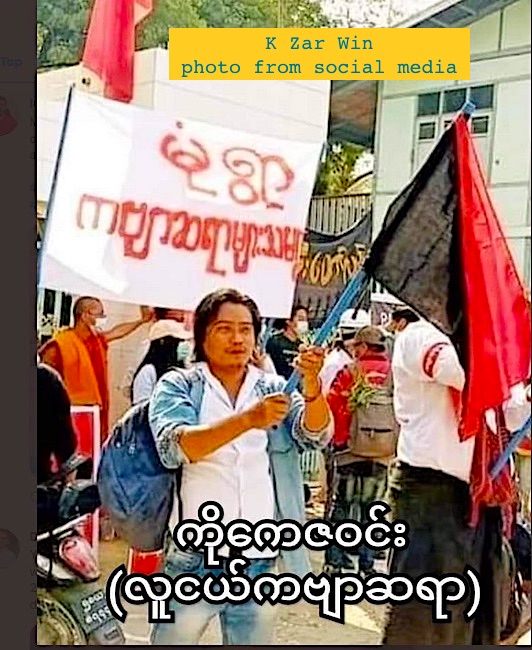

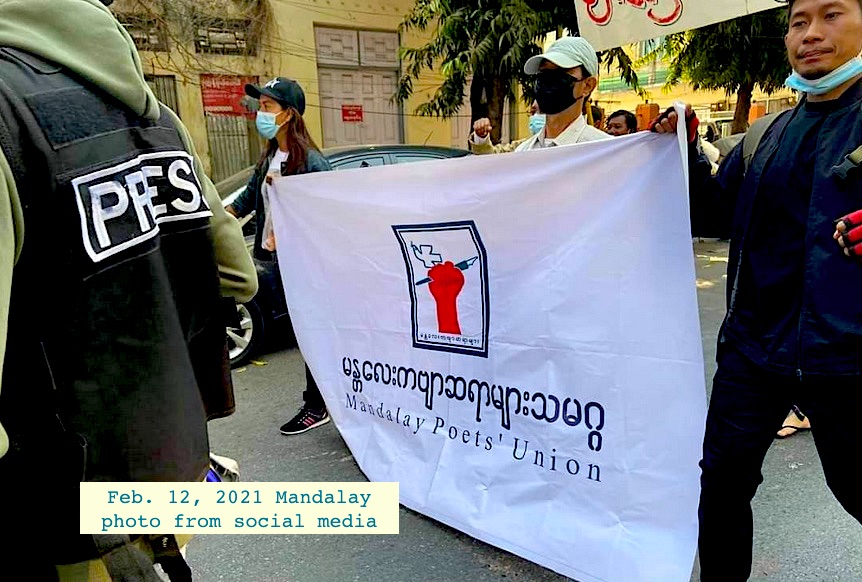
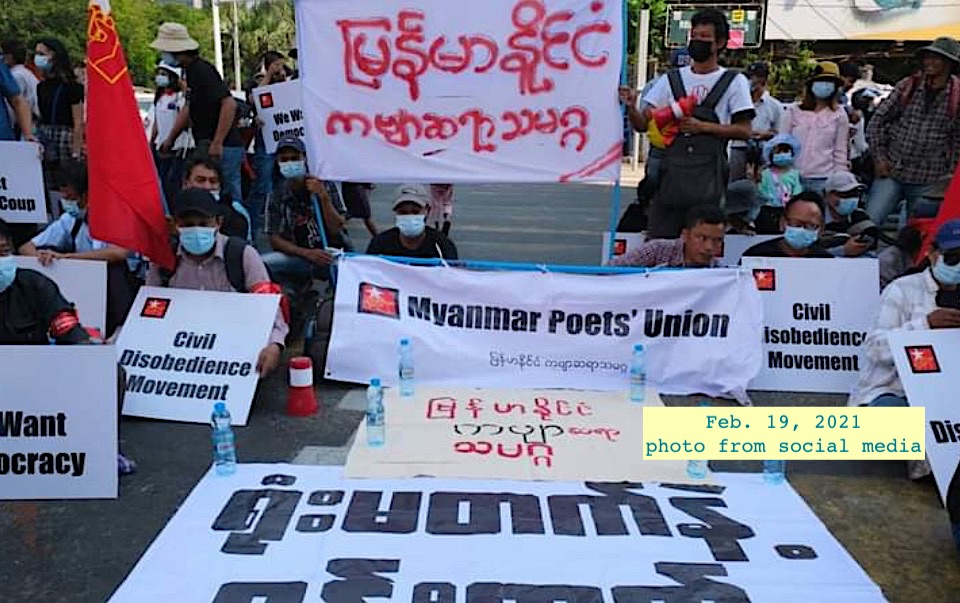 2. From ancient times lands which would become Burma resounded with poetry. Bards like Kachin Jaiwas recited epics. Court poets incl. Arakan’s Muslim poets such as Alaol & 16th C. Lanna’s Queen Hsinbyushin Medaw composed odes, ballads, verse plays. Ainggyin were sung in villages.
2. From ancient times lands which would become Burma resounded with poetry. Bards like Kachin Jaiwas recited epics. Court poets incl. Arakan’s Muslim poets such as Alaol & 16th C. Lanna’s Queen Hsinbyushin Medaw composed odes, ballads, verse plays. Ainggyin were sung in villages. 